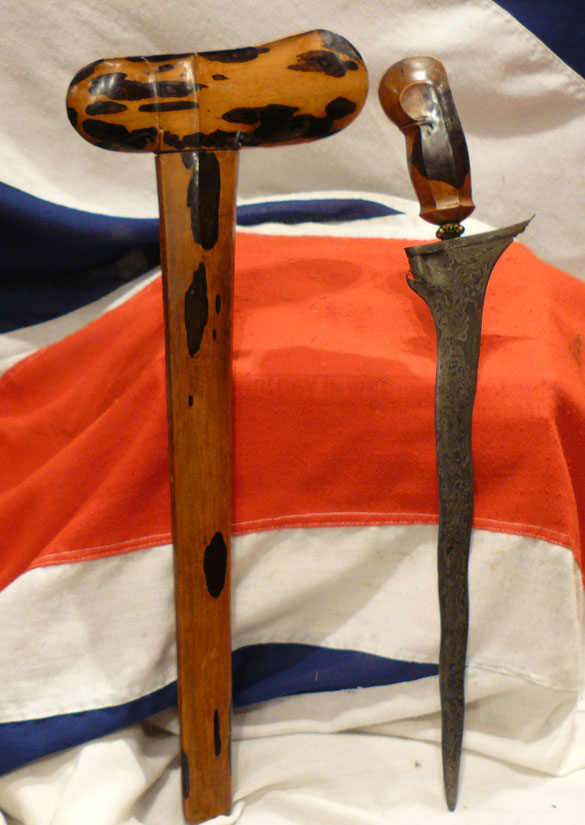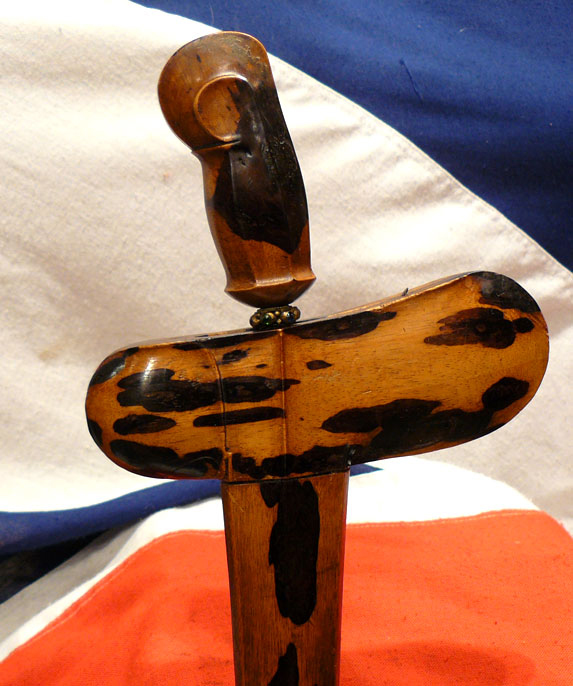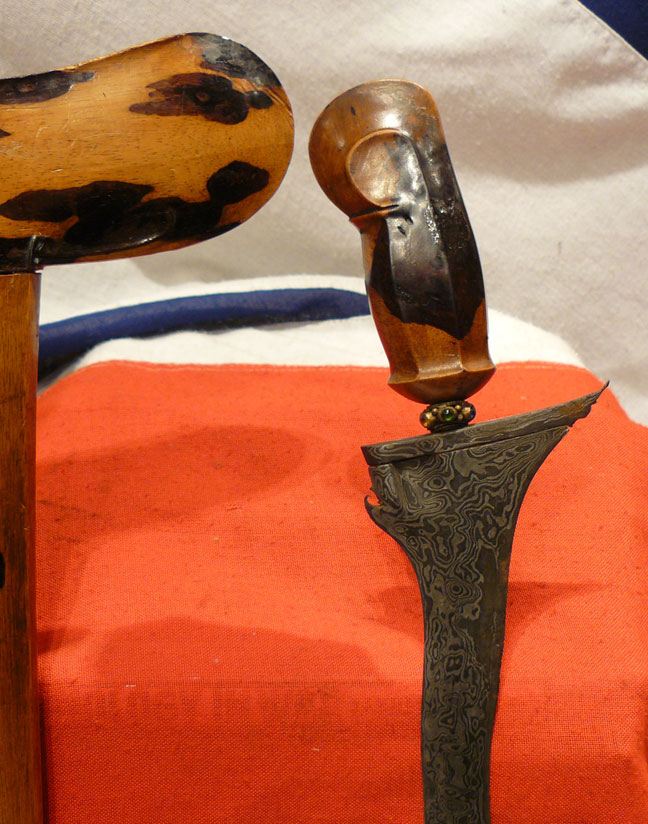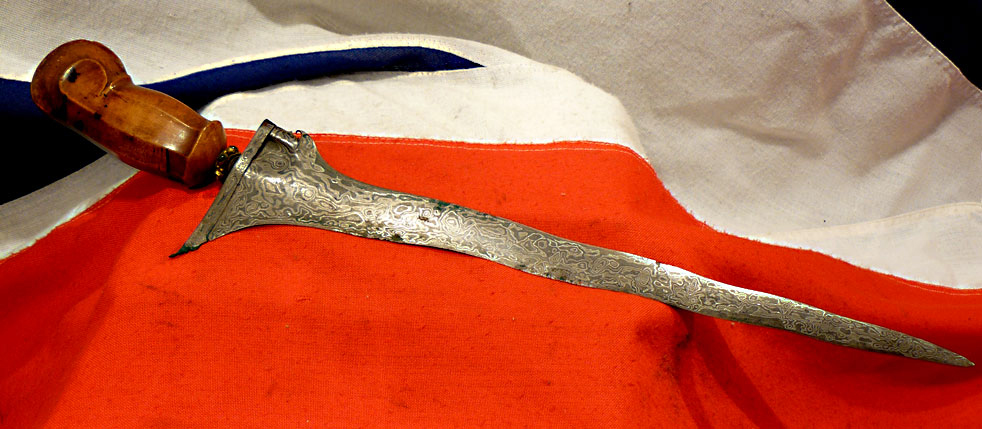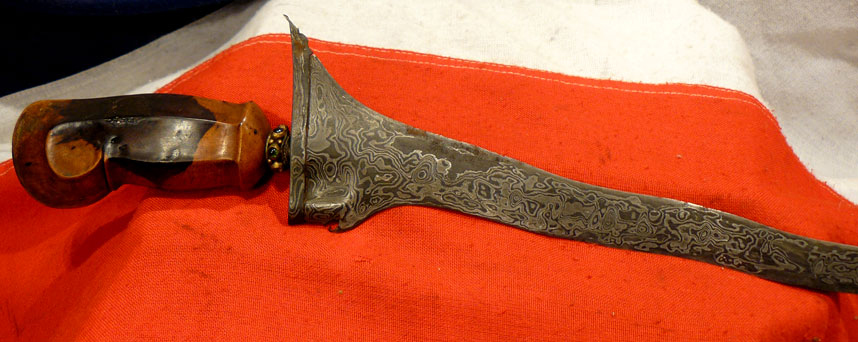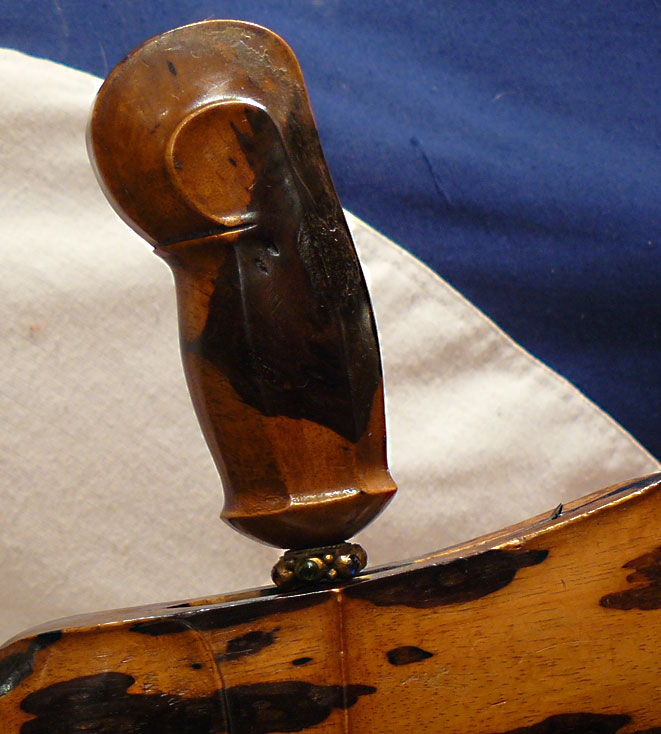A Superb, Antique, Meteoric Steel Kris With Singularly Beautiful Blade of Meteorite Steel. The Metalurgical Graining in The Blade Is Absolutely Spectacular
Made with laminate steel and pamor and likely with metal from a meteorite. An old, 18th century Bali Keris [or Kris] with a superbly sculpted serpentine seven wave blade bearing pamor wos wutah. The old wrongko is the batun form in the South Bali style, it is made from an outstanding piece of timoho. The old bondolan hilt is from well patterned timoho wood and is fitted with an old wewer set with pastes.
This keris displays impeccable blade quality in a scabbard of beautifully marked timoho wood and is an outstanding example of the Balinese keris. Pamor is the pattern of white lines appearing on the blade. Kris blades are forged by a technique known as pattern welding, one in which layers of different metals are pounded and fused together while red hot, folded or twisted, adding more different metals, pounded more and folded more until the desired number of layers are obtained. The rough blade is then shaped, filed and sometimes polished smooth before finally acid etched to bring out the contrasting colors of the low and high carbon metals. The traditional Indonesian weapon allegedly endowed with religious and mystical powers. With probably a traditional Meteorite laminated iron blade with hammered nickel for the contrasting pattern. Traditionally the pamor material for the kris smiths connected with the courts of Yogyakarta and Surakarta originates from an iron meteorite that fell to earth at the end of 18th century in the neighborhood of the Prambanan temple complex. The meteorite was excavated and transported to the keraton of Surakarta; from that time on the smiths of Vorstenlanden (the Royal territories) used small pieces of meteoric iron to produce pamor patterns in their kris, pikes, and other status weapons. After etching the blade with acidic substances, it is the small percentage of nickel present in meteoric iron that creates the distinctive silvery patterns that faintly light up against the dark background of iron or steel that become darkened by the effect of the acids.
Code: 22611
680.00 GBP

